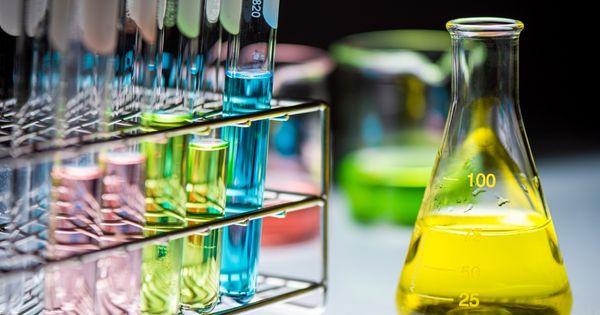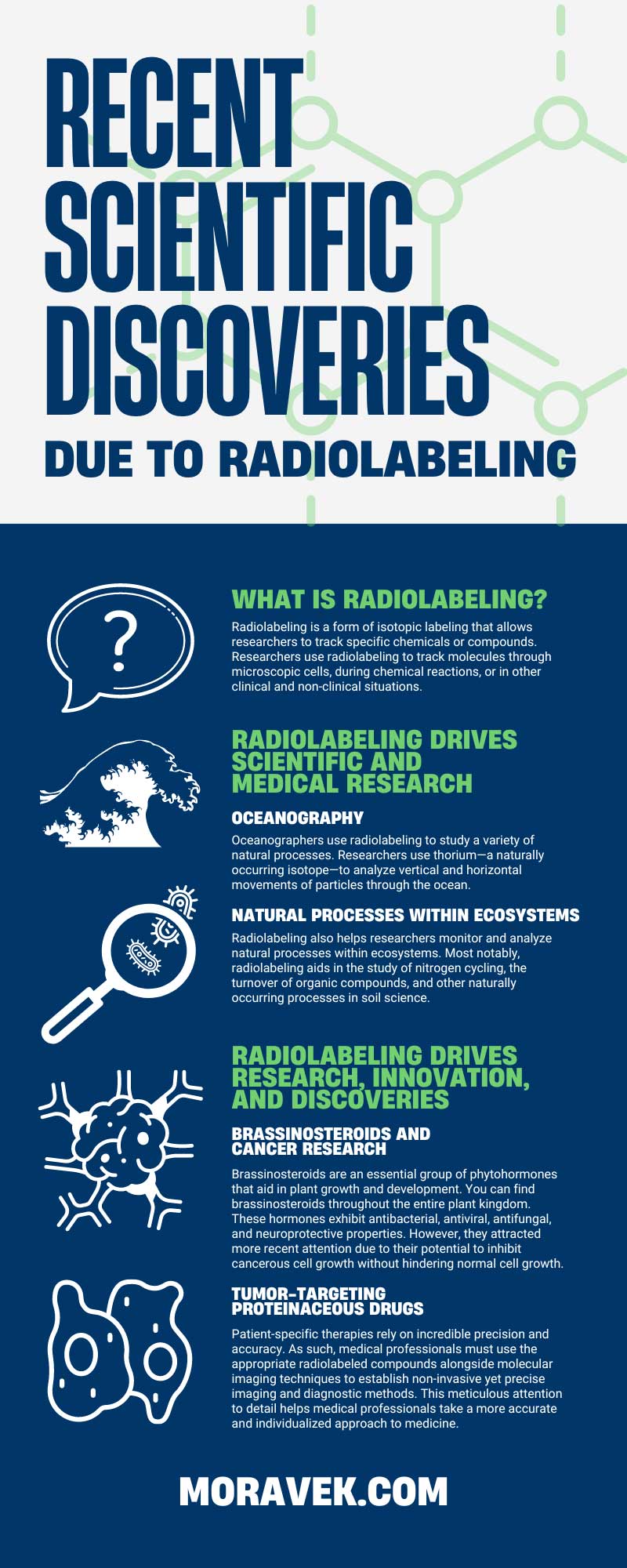
Radiolabeling plays a crucial role in scientific research, especially in the pharmaceutical field. Because radiolabeling is a useful and versatile analytical tool, it comes as no surprise that many discoveries depend on radiolabeling techniques. From routine medical diagnostic processes to fascinating studies in the realm of cancer research, we owe many scientific developments to the wonders of radiolabeling.
Understanding what radiolabeling is and the role it plays in past and current research allows scientists to appreciate how far we’ve come while also looking toward the potential discoveries the future has in store. Read on to discover some of the most promising recent scientific discoveries due to radiolabeling.
What Is Radiolabeling?
To understand the role radiolabeling plays in cutting-edge research, you must first understand what this process is and how it works. Radiolabeling is a form of isotopic labeling that allows researchers to track specific chemicals or compounds. Researchers use radiolabeling to track molecules through microscopic cells, during chemical reactions, or in other clinical and non-clinical situations.
The radiolabeling process consists of labeling specific molecules with harmless radioactive isotopes. For example, a researcher might replace a carbon atom within a molecule with the carbon isotope carbon-14 (C14). Because C14 is easy to track with monitoring equipment, the researcher can then follow the molecule clearly through the rest of the study.
Common radiolabeled compounds researchers use in modern radiolabeling include carbon-14 (C14), tritium (3H), and sulfur-35 (35S).
Radiolabeling Drives Scientific and Medical Research
The versatility of common radiolabeled compounds makes them ideal for a wide range of applications. However, some of the most incredible applications of radiolabeling revolve around clinical, pre-clinical, and non-clinical pharmaceutical studies.
Radiolabeling allows pharmaceutical researchers to study drug metabolism. By following the paths of radiolabeled compounds, medical researchers can learn how a drug or other chemical substance reacts to various compounds in the body. This helps researchers determine how a specific drug activates, becomes inactive, breaks down, and eventually leaves the body.
Drug developers rely on this information to create effective medications and safe dosage levels for patients. Radiolabeling helps empower and streamline research so pharmaceutical companies can bring their drugs to market quicker.
In addition to drug development, radiolabeling also plays key roles in oceanography, ecosystem analysis, and medical diagnostics.
Oceanography
Oceanographers use radiolabeling to study a variety of natural processes. Researchers use thorium—a naturally occurring isotope—to analyze vertical and horizontal movements of particles through the ocean.
Another application of radiolabeling in oceanography is the study of circulation in local systems, like bays, rivers, and groundwater sources. For example, researchers will study radium isotopes that occur naturally at specific points in a river. As water from that source point flows into other systems, such as a bay, the radium’s isotopic ratio will decrease. Researchers measure the amount of radium at different locations to study the way the water has circulated throughout various waterways.
Natural Processes Within Ecosystems
Radiolabeling also helps researchers monitor and analyze natural processes within ecosystems. Most notably, radiolabeling aids in the study of nitrogen cycling, the turnover of organic compounds, and other naturally occurring processes in soil science.
For example, researchers commonly use nitrogen-15 (N15) to study the nitrogen cycle that connects plants and animals within an ecosystem. Other applications of radiolabeling involve studying autotrophs—organisms like algae that produce complex organic compounds from carbon—through the use of radiolabeled compounds like C14.
By following radiolabeled compounds through natural cycles within an ecosystem, researchers can learn more about these naturally occurring processes and monitor the health of specific ecosystems.
Medical Imaging
Medical professionals use radiolabeling alongside medical imaging to improve diagnostic techniques. Professionals give patients harmless radiolabeled pharmaceuticals—either orally or intravenously—before conducting an MRI, CT scan, or similar imaging test.
Once in the body, the radiolabeled compounds reveal the inner workings of organs and cells, allowing medical staff to capture clearer images of the part of the body they’re studying. This form of medical imaging allows for a more accurate diagnosis, which helps researchers, doctors, and patients alike.
Radiolabeling Drives Research, Innovation, and Discoveries
Countless studies depend on radiolabeling to accurately monitor and analyze a chemical’s movement and behavior. Radiolabeling allows scientists to develop pharmaceuticals, test new materials, and so much more. As a result, many recent scientific discoveries in medicine and drug development are due to radiolabeling.
Calcium Carbonate as a Bioactive Compound
Bioactive compounds are compounds that have active effects on living organisms, tissue, or cells. Many bioactive compounds offer natural health benefits. Therefore, these compounds are a popular point of study when researching treatments for cancer, heart disease, and other serious ailments.
Calcium carbonate (CaCO3) is one of the most promising bioactive compounds, and researchers are using radiolabeling techniques to further study its uses in drug delivery applications. Before introducing CaCO3 to the field of drug development, researchers must first determine its toxicity as well as the way it moves throughout the body. Pharmaceutical researchers use radiolabeling to monitor CaCO3’s movement through laboratory animals and determine the compound’s safety and efficacy as a potential pharmaceutical element.
Brassinosteroids and Cancer Research
Brassinosteroids are an essential group of phytohormones that aid in plant growth and development. You can find brassinosteroids throughout the entire plant kingdom. These hormones exhibit antibacterial, antiviral, antifungal, and neuroprotective properties. However, they attracted more recent attention due to their potential to inhibit cancerous cell growth without hindering normal cell growth.
Pharmaceutical researchers use radiolabeling in combination with brassinosteroids to study the specific activity of brassinosteroids and determine the extent of their effects on cancerous cells.
Tumor-Targeting Proteinaceous Drugs
Proteinaceous drugs are man-made therapeutic proteins meant to mimic naturally occurring human proteins. Proteinaceous drugs have a larger molecular size and therefore provide more operative information than other pharmaceutical options. As a result, proteinaceous drugs offer great potential in furthering the efficacy of patient-specific therapies such as personalized medicine.
Patient-specific therapies rely on incredible precision and accuracy. As such, medical professionals must use the appropriate radiolabeled compounds alongside molecular imaging techniques to establish non-invasive yet precise imaging and diagnostic methods. This meticulous attention to detail helps medical professionals take a more accurate and individualized approach to medicine.
Moravek is a dependable supplier of radiolabeled compounds for various studies. Learn more about our services and expertise when you partner with the experienced team at Moravek today.

